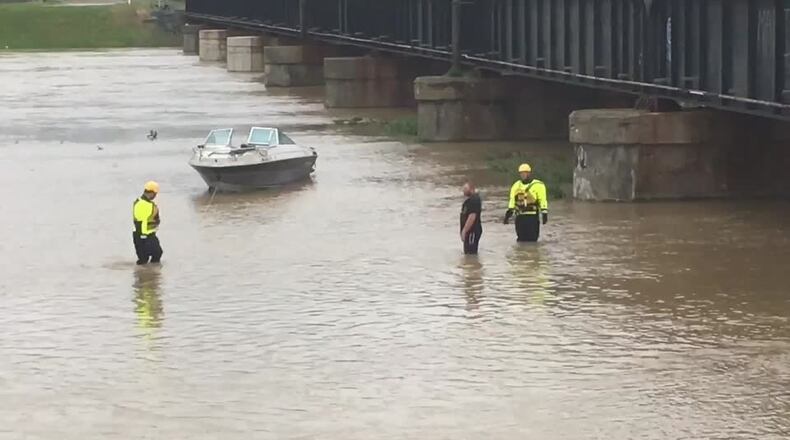At some point during all that mess my plumber tried to cheer me up by saying: “Look, this stack was designed to last 100 years. Your house is 120 years old – so you got 20 free years out of it!”
Sweet guy, but it didn’t make me feel any better.
Which brings us to the system of dams and other flood control devices in the Miami Valley designed to protect this region from another 1913 catastrophe. 100 years old and like my stack, well passed their life expectancy.
We should all be worried. The crumbling state of these dams combined with the increasing intensity of rain storms brought on by climate change – yes, it’s here – means that this region is a sitting duck for a major flood event. And if you think that’s an exaggeration then remember the Edenville dam collapse in Michigan earlier this year. That dam was exactly as old as those along the Miami.
The flood control infrastructure in our region is symbolic of the shabby state of infrastructure of all kinds, all over the nation. If you want the fullest sense of just how bad things are I refer you to the Infrastructure Report Card issued every several years by the American Society of Civil Engineers. The picture isn’t pretty. In 2017 the ASCE gave our infrastructure – everything from aviation facilities to wastewater treatment – a D+.
America once had infrastructure that was the envy of the rest of the world so it’s important to understand how we got to the point where much of the nation is being held together with duct tape and super-glue. I can summarize it in one word: Reaganomics.
Across the middle decades of the 20th century we invested in infrastructure. During the Great Depression the Works Progress Administration built roads and airports and post offices, many of which are still with us today, like the Pacific Coast highway and the post office in my town. Arthur Morgan, the man who designed the Miami River flood control plan went on to become the first director of the TVA where he built hydroelectric and flood control projects across much of the South.
After the war, those investments continued, most spectacularly with the Interstate Highway Act of 1956 which authorized 42,000 miles of high-speed roads from coast to coast.
By the time that project was largely completed in the mid-1970s we were spending roughly 3 percent of our entire gross domestic product on infrastructure.
Then Reagan arrived with the vow to end “wasteful” government spending. Cutting domestic spending along with enormous tax cuts to the top end of the economic pyramid would create endless prosperity, The Gipper promised.
By the end of Reagan’s administration we only spent 2 percent of the GDP on bridges, roads and sewer systems. Even more consequentially, the federal contribution to those infrastructure projects had declined from 40 percent to 25 percent, passing on the tab to state and local governments many of which can’t afford it. No coincidence that the ASCE issued its first report card in 1988. The engineers could see where the arrows were pointing and they were trying to warn the rest of us.
Reaganomics has meant endlessly deferred maintenance on our infrastructure, with fingers crossed that the bridges will hold up just a bit longer.
Yet while Reagan is long gone, Reaganomics remains the orthodoxy of the Republican Party, never mind that it has left our infrastructure literally falling apart. But I can assure you that more tax cuts to the wealthy are not going to hold back the water when the Miami River’s dams start to fail.
Steven Conn, W.E. Smith Professor of History at Miami University, is a regular contributor.
About the Author

